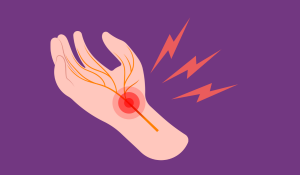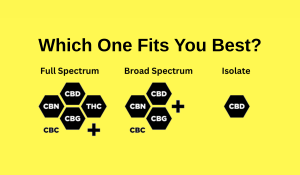Arthritis encompasses a wide range of conditions, including:
Imagine struggling with simple tasks like opening jars, climbing stairs, or even typing due to persistent joint pain and stiffness. This is the daily reality for many living with arthritis.
CBD interacts with the ECS, a network of receptors (CB1 and CB2) found throughout the body. The ECS plays a crucial role in maintaining homeostasis (balance) by regulating processes like pain perception, inflammation, and immune function. Unlike traditional pain medications, CBD offers a more natural approach with potentially fewer side effects.
When applied topically, CBD interacts primarily with CB2 receptors in the skin and surrounding tissues. This localized interaction allows for targeted relief directly at the source of pain. The cream penetrates the skin to reach underlying tissues, where CBD may apply its anti-inflammatory and pain-relieving effects.
Dosage varies based on factors like pain severity, cream concentration, and individual body chemistry. Start with a small amount (e.g., a pea-sized amount) and apply it 2-3 times a day. Monitor your body’s response and adjust accordingly. Consult with your doctor or a healthcare professional experienced with CBD for personalized guidance.
CBD is generally well-tolerated. However, some may experience mild skin irritation. Perform a patch test before widespread use. Consult your doctor before using CBD, especially if you:
You might be wondering how CBD topicals compare to other ways of managing arthritis pain. Well, over-the-counter pain relievers like ibuprofen or acetaminophen can offer quick relief for some, but they might not be suitable for long-term use due to potential side effects like stomach irritation.
Prescription medications, on the other hand, can be more powerful but often come with a higher risk of side effects and require a doctor’s prescription.
CBD topicals offer a different approach—they’re applied directly to the affected area, aiming for targeted relief with minimal risk of systemic side effects.
However, it’s worth noting that research on CBD is still ongoing, and what works for one person might not work for another. It’s always a good idea to chat with your doctor about the best approach for your individual needs.”
This approach avoids a dry table and instead uses a more conversational tone to explain the differences and encourage readers to consult their doctors.
Many users report relief, but more research is needed.
Generally well-tolerated, but some may experience skin irritation.
Consult your doctor first.
Reputable online retailers, health food stores, and some pharmacies. Choose products with third-party testing.

Therapeutic Uses of CBD Managing Chronic Pain with CBD Struggling with chronic pain? CBD might help. Studies suggest it can reduce inflammation and alleviate discomfort,...
Read More
Just as CBD may help humans due to its interaction with the body’s endocannabinoid system, the same is true of dogs. CBD has the potential...
Read More
Cannabis has been used for millennia to treat numerous health conditions. Current research offers promising results on the effects of CBD oil on breast cancer.
Read More
What Is CBD for Cats? CBD (Cannabidiol) is a natural compound from hemp. It’s non-psychoactive, meaning your cat won’t get “high.” Instead, it works with...
Read More
1. Understanding Neuropathic Pain Neuropathic pain results from nerve damage or dysfunction, causing symptoms like burning, tingling, or sharp shooting pains. Common Causes: Symptoms Include:...
Read More
CBD for Pets: A Pet Parent’s Guide to Dosage We all want the best for our pets, especially when they’re struggling with pain, anxiety, or...
Read More
What Is Lupus? Lupus is a long-term autoimmune condition that can impact multiple organs, including the skin, heart, lungs, and kidneys. The most common type...
Read More
1. Full-Spectrum CBD: The All-In-One Option What it is: Contains CBD, minor cannabinoids, terpenes, flavonoids — and less than 0.3% THC. Why choose it: Promotes...
Read More
Why Use CBD for Pain? Chronic pain affects millions and often limits everyday activities. CBD, a non-intoxicating compound from hemp, is emerging as a natural...
Read More
CBD Side Effects, Risks of CBD, and CBD Oil Concerns: The Real Deal While many people tolerate CBD well, it’s not without its potential drawbacks....
Read More